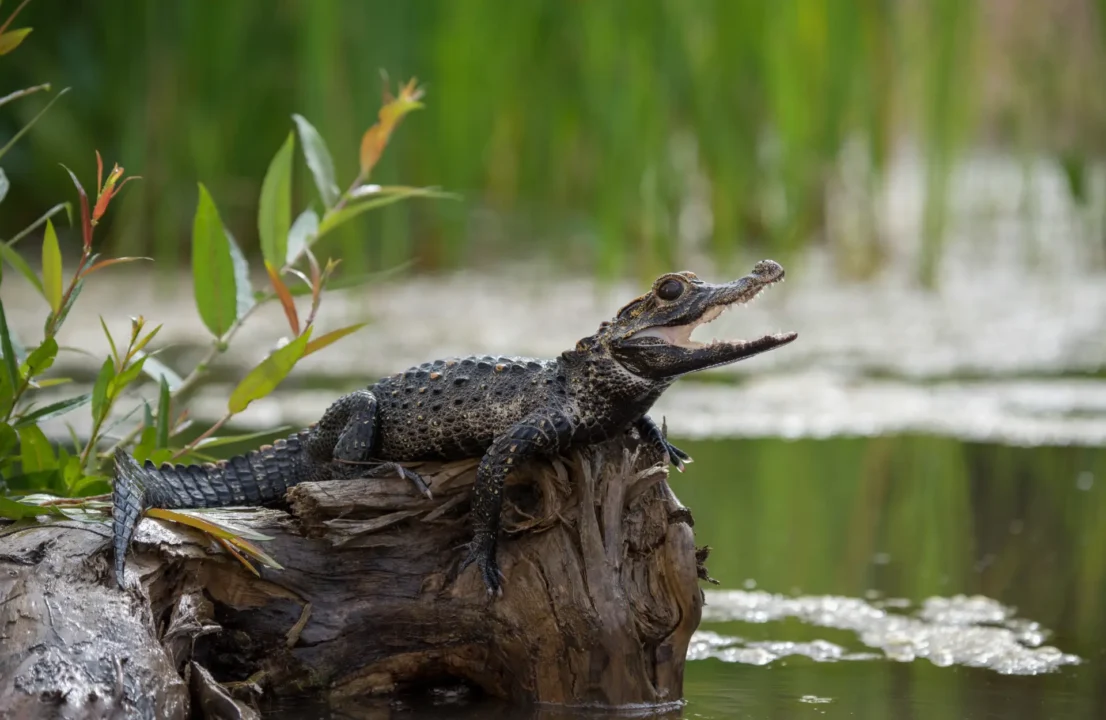The incredible diversity of reptiles in the Amazon rainforest makes Peru one of the most fascinating destinations in the world for nature lovers. In the dense tropical forests and winding rivers of the Peruvian Amazon live some of the most impressive species on the planet: green anacondas, black caimans, tree-dwelling iguanas, emerald boas, and various giant turtles. These reptiles play a vital role in the region’s ecological balance, and observing them in their natural habitat is an unforgettable experience.
What reptiles live in the Amazon rainforest of Peru?
The Amazon rainforest of Peru is a biodiversity paradise where hundreds of unique reptiles live. Among the wildlife of the Peruvian Amazon, standout species include the green anaconda, the black caiman, the emerald boa, and several giant turtles. Each reptile plays its own role in the ecosystem: for example, the black caiman is the largest predator in the Amazon and can devour even deer and capybaras. In the Amazon, you can also see arboreal snakes, green iguanas climbing trees, and turtles basking on logs in the rivers. Exploring these reptiles in the Amazon jungle allows you to marvel at Amazonian wildlife and understand the rich diversity of Peruvian nature.
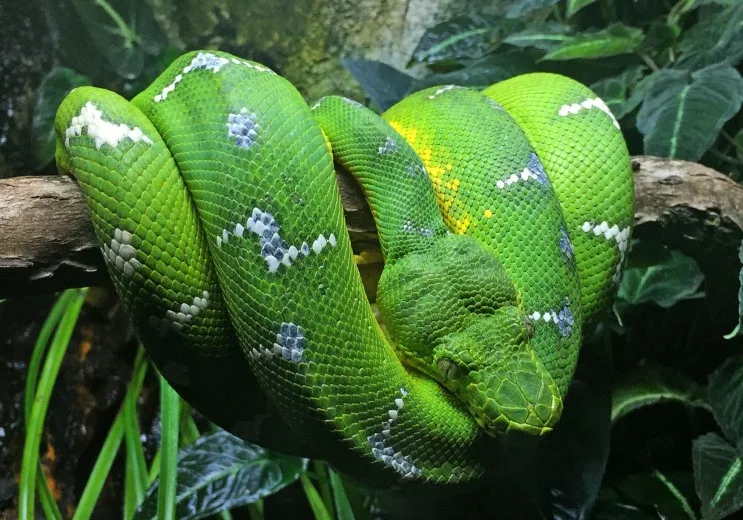
When is the best time to see reptiles in the Peruvian Amazon?
The dry season (April to October) is the best time to see reptiles and other animals in the Peruvian Amazon. With less rain, trails are passable and many reptiles gather on the banks of rivers that still hold water. Between June and November, river levels drop, making it easier to see species like giant fish and emerging turtles. In contrast, during the rainy season (December to March), many reptiles remain hidden or swimming underwater. For a wildlife-watching tour in Peru, it’s best to plan your visit between April and October, when it’s easier to see sunbathing anacondas, iguanas on branches, and caimans on the riverbank.
Reptiles of the Peruvian Amazon Rainforest
1. Green Anaconda (Eunectes murinus)
The green anaconda is a constrictor snake endemic to South American rivers. The heaviest snake in the world, it can reach 6 to 7 meters in length. Spending much of its life in the water, this semi-aquatic species swims quickly and stalks its prey while swimming or hiding under submerged logs. It feeds on a wide variety of vertebrate animals: fish, rats, small deer, capybaras, and even young jaguars. It kills its prey by constriction (wrapping around and suffocating them). Thanks to its loreal pits (sensory organs that detect body heat, even in complete darkness), it can hunt at night in total darkness.
It is currently considered of “Least Concern” by the IUCN, meaning it is still relatively abundant in the rainforest. Seeing a green anaconda in its natural habitat is thrilling; expert guides point out locations in reserves where this gigantic snake tends to stalk.
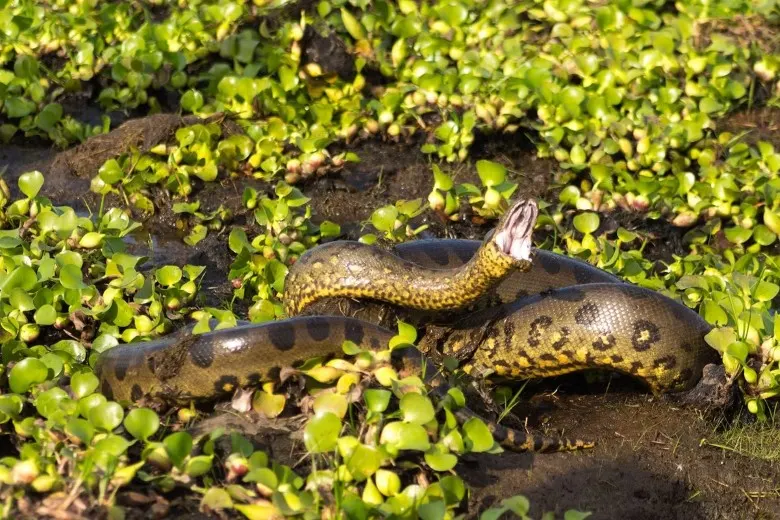
2. Black Caiman (Melanosuchus niger)
The black caiman is the largest aquatic reptile in the Peruvian Amazon. Adults measure between 4 and 5 meters long and have dark skin that gives the species its name. Found along riverbanks and lagoons, where it can be seen basking in the sun. It is a generalist predator and apex predator, feeding on fish, turtles, aquatic birds, and mammals such as otters, deer, or capybaras. It can even devour tapirs or young jaguars. With its powerful jaws and status as the ecosystem’s top predator, it helps control other animal populations. Historically hunted for its skin, it has recovered in Peru, but is still classified as “Critically Endangered” locally due to low population numbers. If you spot a black caiman, keep your distance—they can attack if they feel threatened.
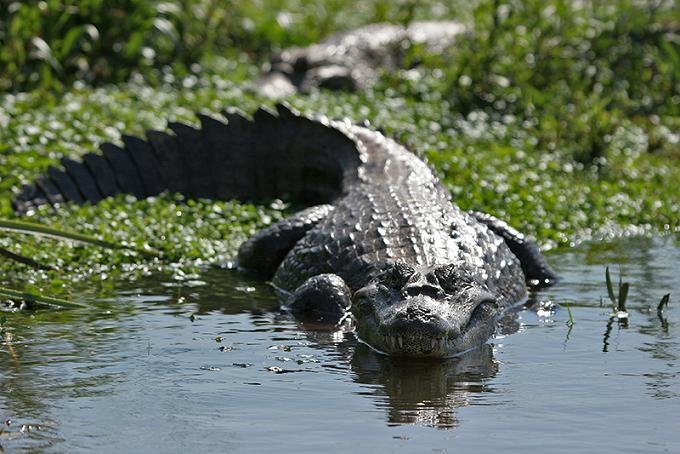
3. Emerald Boa (Corallus batesii)
The emerald boa is an arboreal snake with a brilliant green color that lives in the western Amazon of Peru. It is one of the most striking reptiles in the amazon rainforest due to its appearance and lifestyle. It grows up to 1.5–1.8 meters, with females typically larger. Living high in the trees, it rarely descends to the ground. It feeds mainly on small mammals adapted to its size (like parrots, squirrels, and small monkeys), but also eats birds, lizards, and frogs. It is non-venomous: it kills by constriction. Its green color and white stripes help it camouflage among foliage. Its conservation status is Low Risk (Least Concern), so it is still found in the rainforest, though sparsely.
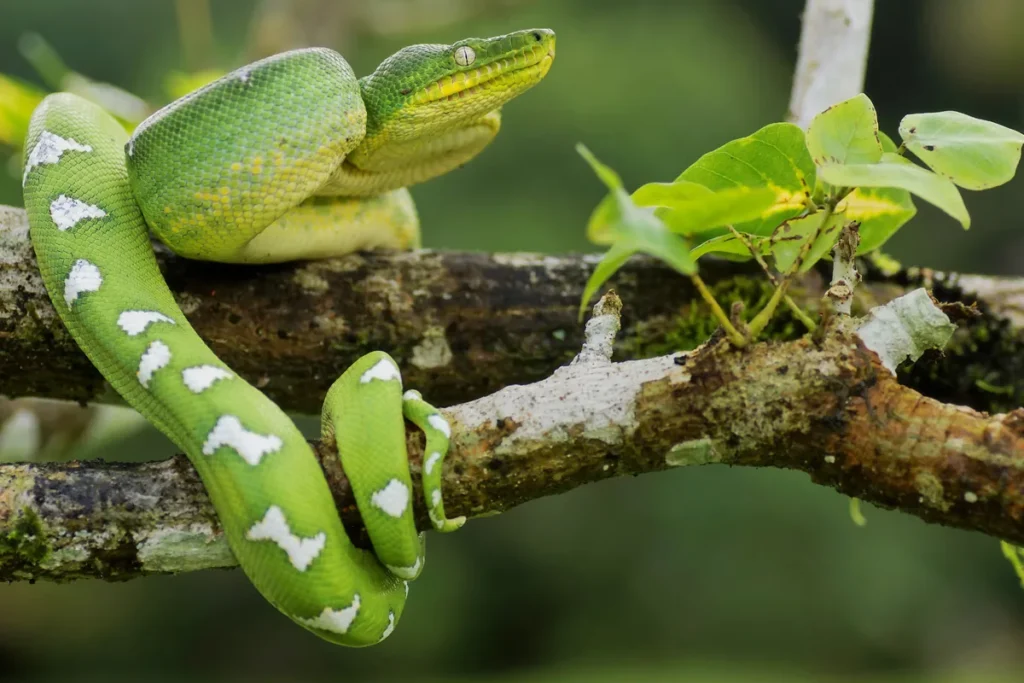
4. Green Iguana (Iguana iguana)
The green iguana is one of the largest lizards in the Americas and lives in tropical forests near water. Males can reach up to 2 meters in length (including tail). They are arboreal reptiles, spending most of their time in tree branches, descending only to eat or escape. Their diet is strictly herbivorous: they eat leaves, tender shoots, flowers, and fruits. They are excellent swimmers: if threatened by a jaguar or bird of prey, they plunge into the river to escape. They use their spiked tails for defense and can detach them if grabbed. Green iguanas are diurnal and solitary. Their conservation status is Least Concern, though they are threatened in some areas by hunting and habitat loss.
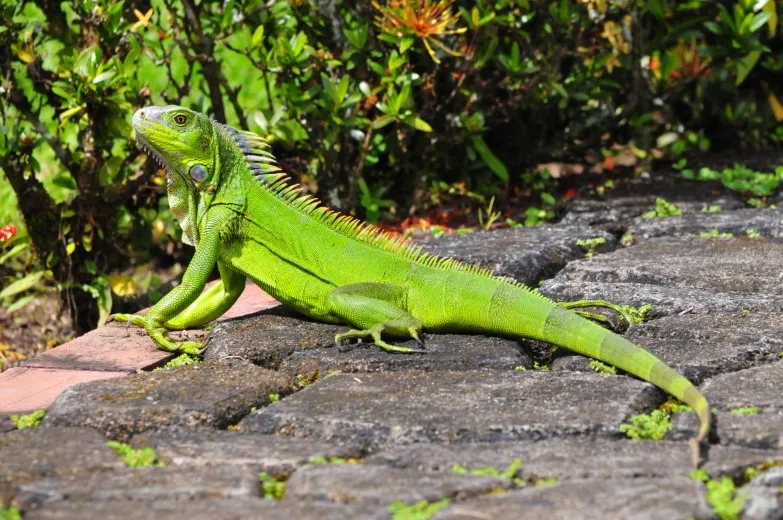
5. Yellow-Spotted River Turtle (Podocnemis unifilis)
The taricaya turtle lives in large rivers and lakes of the Amazon. Its shell is oval-shaped and darkens with age; as juveniles, they have yellow spots on the head. They have webbed feet for swimming. They feed on aquatic plants, fruits, and flowers, though juveniles eat more meat before turning herbivorous. It is a vulnerable species due to egg harvesting and adult hunting. In the Peruvian Amazon, they are often seen sunbathing on sunken logs or riverbanks.
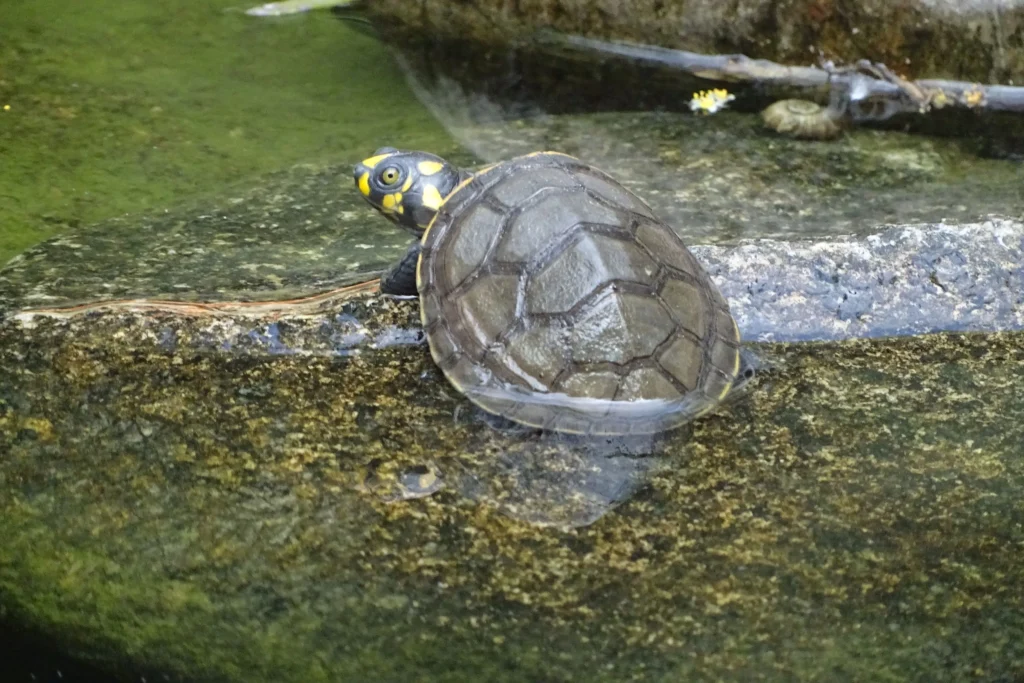
6. Boa Constrictor (Boa constrictor)
The boa constrictor is another large species that contributes to the incredible diversity of reptiles of the Peruvian Amazon rainforest. Females can reach 4–5 meters and weigh 45–70 kg. Solitary and primarily nocturnal, this snake climbs trees and is also a strong swimmer. It feeds on lizards, birds, bats, rats, and squirrels; it has even been seen catching bats in flight. It kills by constriction. Non-venomous and long-lived, it can survive up to 20 years. Currently, it is listed as Least Concern.
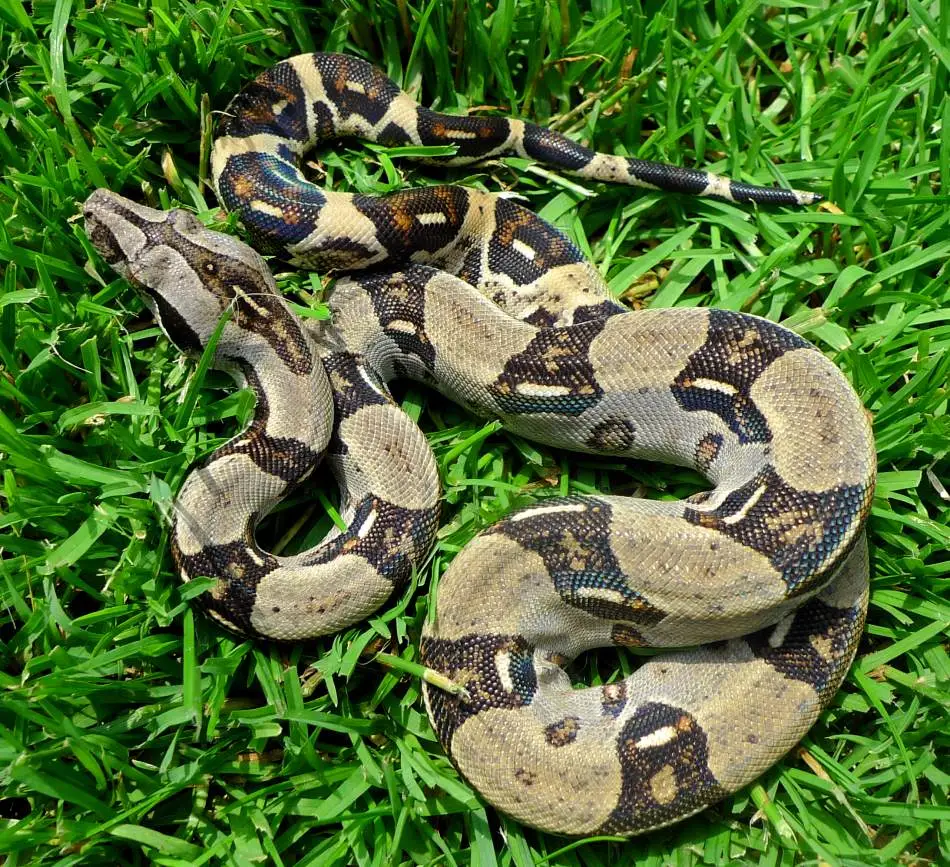
7. Shushupe or Bushmaster (Lachesis muta)
The shushupe is the largest viper in South America, reaching up to 4 meters. This species is terrestrial and nocturnal, with potent venom that causes hemorrhaging and paralysis. It feeds on rodents and small mammals, ambushing from leaf litter. It has no audible rattle, but it is very dangerous. Although rare and poorly studied, but currently classified as Least Concern. If you encounter a shushupe, it is critical to keep your distance.
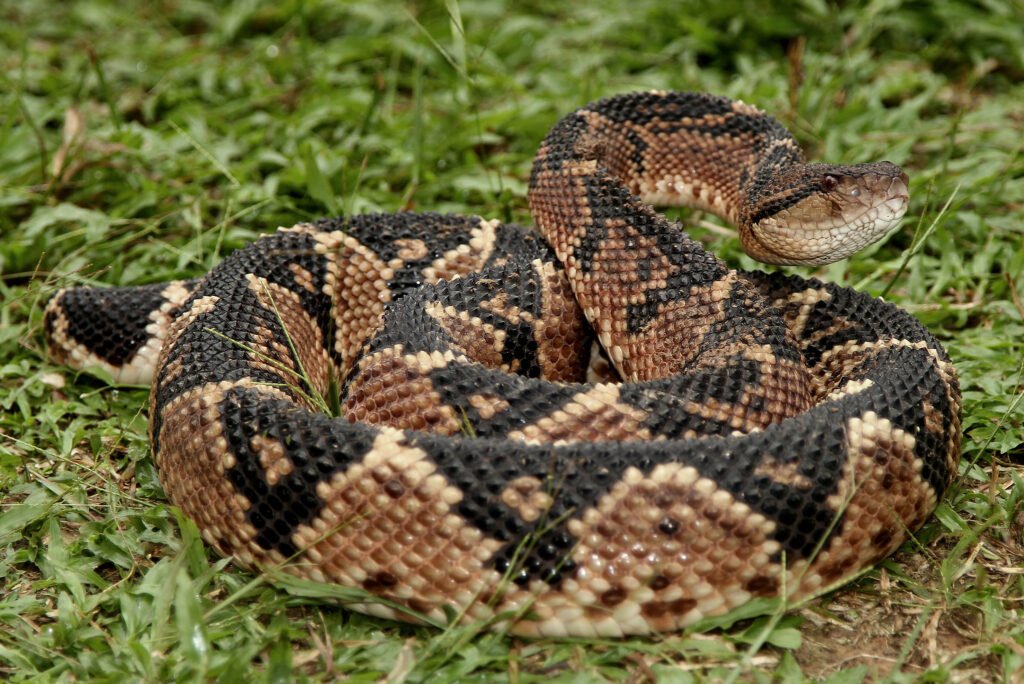
8. Tumbes Crocodile (Crocodylus acutus)
The Tumbes crocodile lives in mangroves and rivers in northern Peru. It can reach up to 6 meters in length and live up to 70 years. Its diet includes fish, turtles, crustaceans, birds, and mammals. It tolerates brackish water and is classified as vulnerable worldwide and critically endangered in Peru. Efforts are underway for its reintroduction to restore ecological balance.

9. Mata-mata Turtle (Chelus fimbriata)
The mata-mata turtle is one of the most peculiar reptiles of the Amazon rainforest, with a prehistoric appearance, flat head, and rough skin. It lives in slow-moving waters and swamps. This turtle feeds on fish and invertebrates, sucking them in with a single gulp. It is not aggressive and depends on the conservation of Amazonian wetlands for its survival.
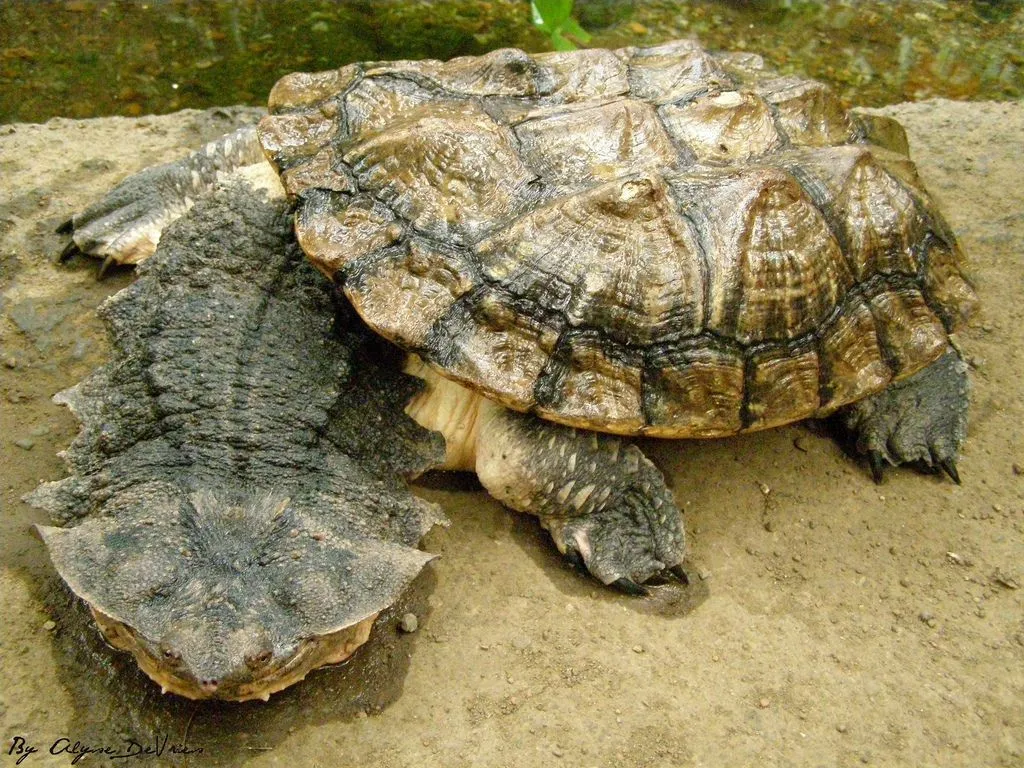
10. Charapa Turtle (Podocnemis expansa)
The charapa is the largest freshwater turtle in the Amazon, with females reaching up to 90 kg. It feeds on aquatic plants, seeds, and flowers. During the dry season, thousands of females nest together on beaches, a phenomenon known as “arribada.” It is currently listed as of least concern, but its populations are declining.
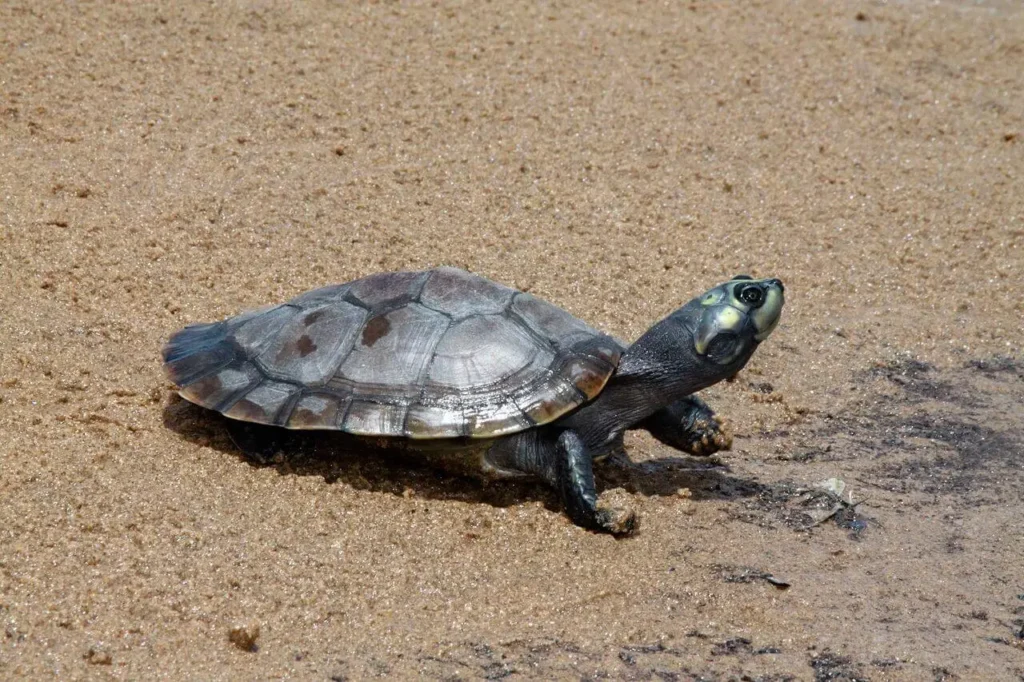
11. Cupiso Turtle (Podocnemis sextuberculata)
The cupiso turtle is smaller and rarer, with a shell about 30 cm long. It lives in rivers of northeastern Peru, nesting on sandbanks. The species is vulnerable due to egg collection and natural predation. In these habitats, it shares the environment with other Amazonian turtles.
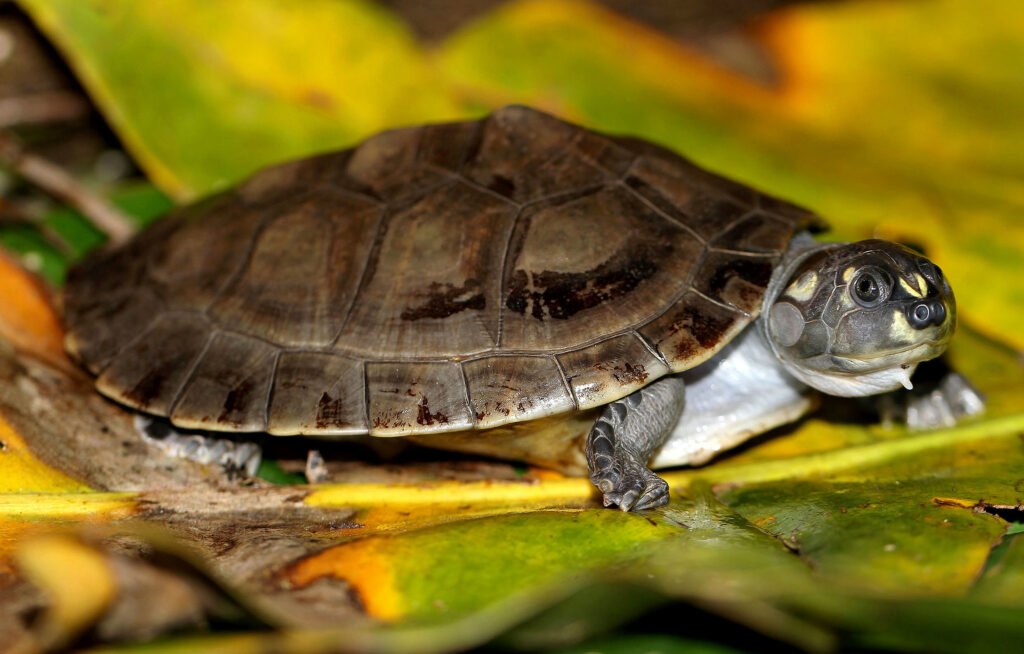
12. Scarlet Snake (Oxyrhopus petolarius)
The scarlet snake has a red body with black rings, resembling a coral snake but not venomous to humans. It is nocturnal, lives among leaves and shrubs, and feeds on lizards, small birds, and other snakes. It is harmless and mimetic, a species that is occasionally spotted during night walks.

How can I see these reptiles in the Peruvian Amazon rainforest?
The safest and most exciting way to see reptiles of the Amazon rainforest is through specialized guided tours. The best regions to do this are Pacaya Samiria, Allpahuayo Mishana, Iquitos, and Tambopata, where pristine ecosystems are preserved. It is recommended to take tours with Peru Jungle Trips, an agency known for its expertise in wildlife watching excursions. Their outings include night hikes, boat rides at dawn, and guided treks through protected rainforests, where it is possible to see caimans, anacondas, boas, turtles, and lizards in their natural habitat.
The reptiles of the Peruvian Amazon rainforest include species such as the green anaconda, black caiman, boas, iguanas, and giant turtles. They are found in unique ecosystems like Pacaya Samiria, Allpahuayo Mishana National Reserve, and Tambopata. The best time to see them is from April to October, on guided tours. These animals are essential to the ecological balance and biodiversity of the Amazon.
With Peru Jungle Trips, you will enjoy an authentic and safe experience in Peru’s wildlife and nature, taking in the biodiversity of the Amazon rainforest. You will have the chance to admire reptiles of the Amazon rainforest during the tours, along with many other wild species that make Peru one of the most fascinating destinations in the world.
Tours where it’s possible to see reptiles of the Peruvian Amazon rainforest
- Iquitos Jungle Tour (4 Days) – Private
- Pacaya Samiria National Reserve (5 Days)
- Manu Reserved Zone (6 Days)
- Manu Amazon Rainforest Expeditions (7 Days)

